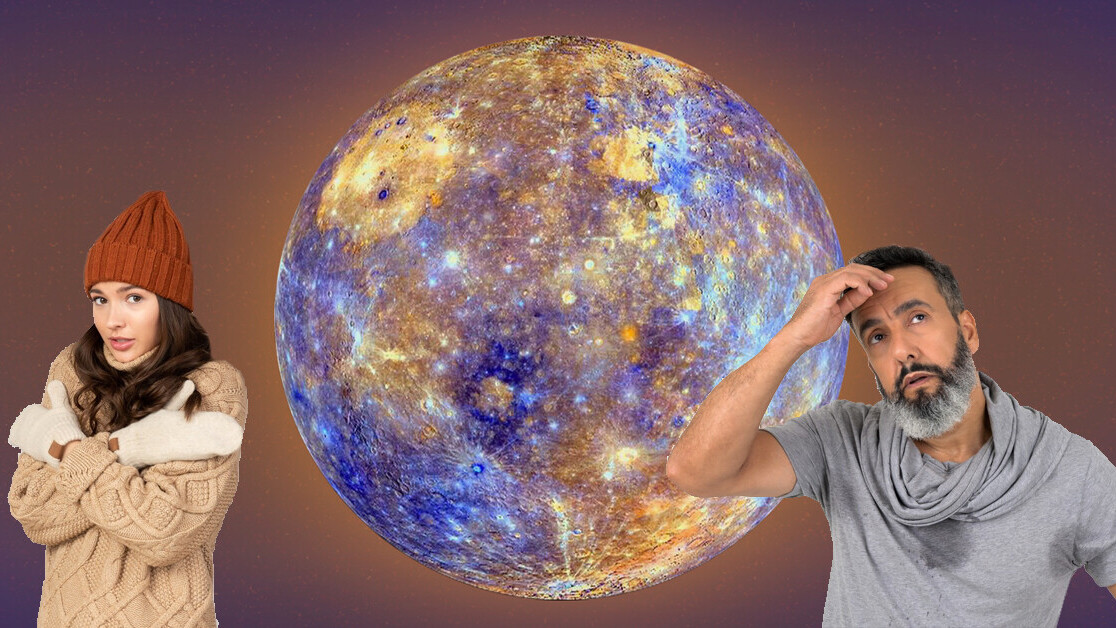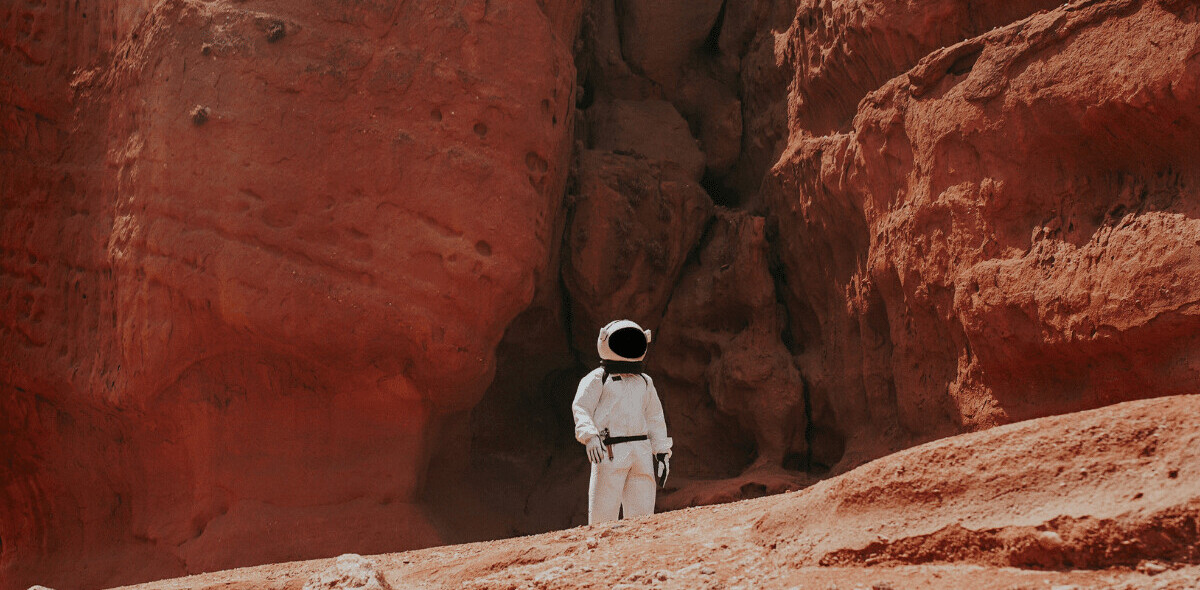
Ice on Mercury, the closest planet to the Sun, may seem impossible. But, could scorching temperatures on that world help form ice?
The scorching surface of Mercury, where temperatures can reach 400 degrees Celsius (750 Fahrenheit), may seem to be the last place astronomers might find ice. However, this enormous heat could play a significant role in the formation of ice on Mercury, a new study reveals.
Many astronomers believe that most of the water on the Mercury was likely delivered to the surface of that diminutive world by asteroids. Within the polar craters of Mercury, ice could stay frozen in eternal darkness.
“Water ice on the surface of Mercury is exposed directly to vacuum, and will rapidly sublime [turn directly from solid to vapor] and escape into space unless it is kept cold at all times. This implies that the ice can never be exposed to direct sunlight. The only locations on the surface of Mercury where this is possible would seem to be near the poles, where the floors of some craters might be deep enough to afford permanent shading,” David Williams of the NASA Goddard Space Flight Center explained in 2012.
Aren’t hydroxyls those stuffed cookies?
Chemical processes could be critical to the presence of water ice on the tiny, rocky world. At the center of this reaction is the solar wind, a stream of charged particles, including protons, racing outward from the Sun in all directions.
Read: [Massive planet that would dwarf Jupiter has been discovered in our galactic neighborhood]
Minerals within the surface of Mercury contain hydroxyl groups, containing one atom each of hydrogen and oxygen. The majority of these molecules are generated by protons streaming from the Sun. The extreme heat excites hydroxyl molecules, freeing them from the surface, resulting in collisions forming water and hydrogen. These materials are then free to drift around the surface of the world.
Some of these water molecules are broken down by sunlight or rise high above the surface. However, some of these molecules land in the eternal darkness of polar craters. Because Mercury does not have a substantial atmosphere to transport heat around the planet, the darkness allows ice to remain frozen despite the extreme temperatures of the tiny world.
“This is not some strange, out of left field idea. The basic chemical mechanism has been observed dozens of times in studies since the late 1960s. But that was on well-defined surfaces. Applying that chemistry to complicated surfaces like those on a planet is groundbreaking research,” said Brant Jones of Georgia Tech’s School of Chemistry and Biochemistry.
Researchers believe this process could account for up to 10% of the ice present on the surface of that world.
The water you blame the messenger for?
Water ice was first detected on Mercury by astronomers on Earth, who saw telltale signs of the molecule in radar observations of the diminutive world.
In 2011, the MESSENGER (MErcury Surface, Space ENvironment, GEochemistry, and Ranging) spacecraft passed the planet, confirming the presence of water ice within the polar craters on that world.
“I had rather be Mercury, the smallest among seven [planets], revolving round the sun, than the first among five [moons] revolving round Saturn.” — Johann Wolfgang von Goethe
Like the Moon, Mercury is pockmarked by a vast number of craters. This world is also just slightly smaller than the Moon, leading to speculations about how chemical and geological processes compare on the two bodies.
The Moon, like Mercury, is believe to house water ice within eternally-shadowed craters at its pole. However, the water on the Moon has characteristics that differentiate these deposits from ice on Mercury. Why water is different in the two locales remains a mystery, but it could be due to the way ice forms within the polar craters. The Moon is far too cold to drive the hydroxyl reactions described on Mercury, although a similar process could result in hydroxyl molecules bouncing around the surface of our lone natural satellite.
The magnetic field of Mercury is only about 10% as strong as our own protective layer surrounding Earth. Still, it is powerful enough to drive protons and other charged particles into a spiral, driving the molecules down to the surface of the smallest planet in the Solar System.
“These are like big magnetic tornadoes, and they cause huge proton migrations across most of the surface of Mercury over time,” explains Thomas Orlando, a professor in Georgia Tech’s School of Chemistry and Biochemistry.
These protons implant just 10 nanometers (four ten-millionth of an inch) beneath the surface of Mercury. After striking hydroxyls, these molecules diffuse to the surface of the world, where heat can turn them to vapor, allowing the molecules to be transported to polar craters.
One question that remains is how asteroids that struck Mercury developed their water in the first place. Researchers believe the process described in this new study may be able to account for water on asteroids which later (occasionally) strike mercury and the Moon. Even without water, asteroid collisions could form water, investigators suggest.
As humans begin to populate the Solar System, colonists will need water for drinking as well as for fuel. Although we are unlikely to see a human mission to Mercury in the near future, this study reveals that we just may find water in the most unexpected places.
This article was originally published on The Cosmic Companion by James Maynard, an astronomy journalist, fan of coffee, sci-fi, movies, and creativity. Maynard has been writing about space since he was 10, but he’s “still not Carl Sagan.” The Cosmic Companion’s mailing list/podcast. You can read this original piece here.
Get the TNW newsletter
Get the most important tech news in your inbox each week.






